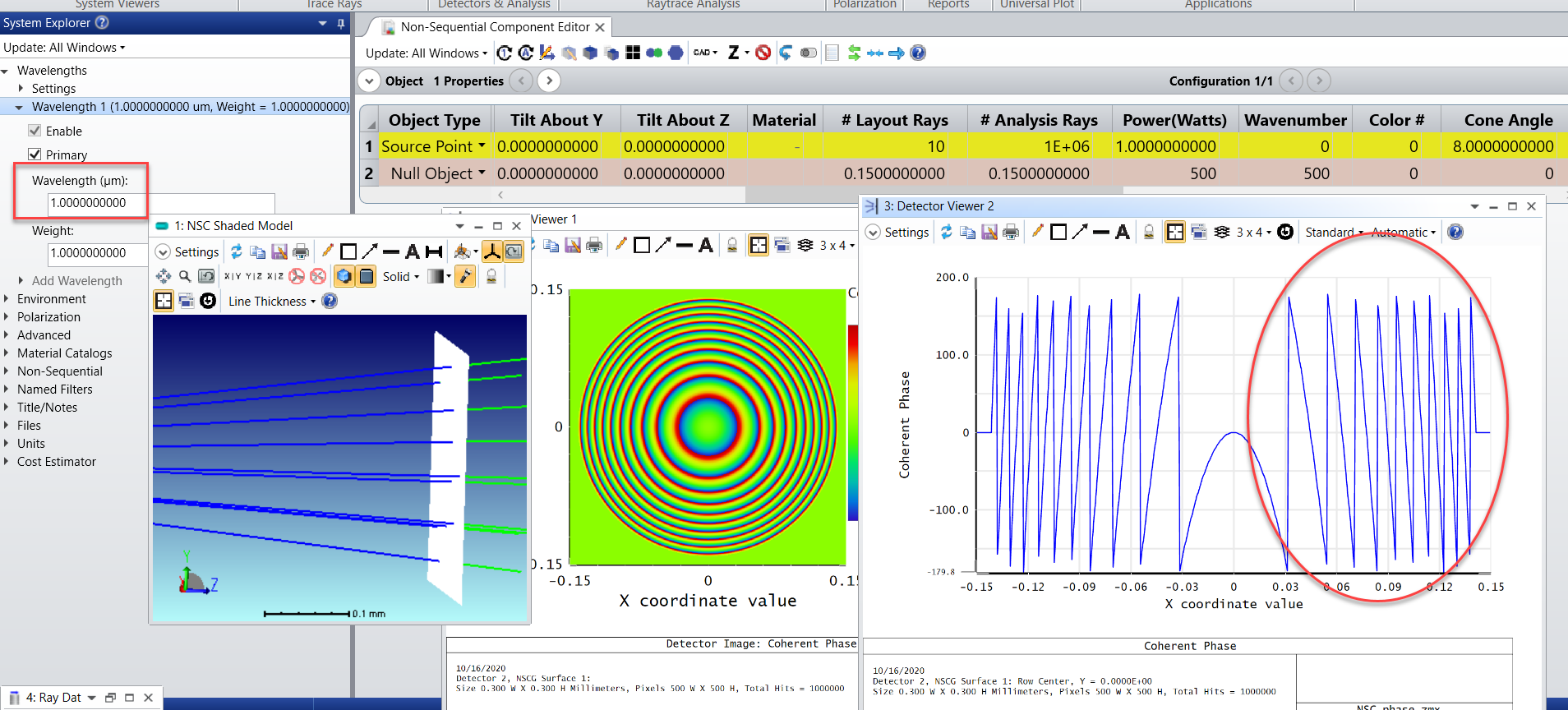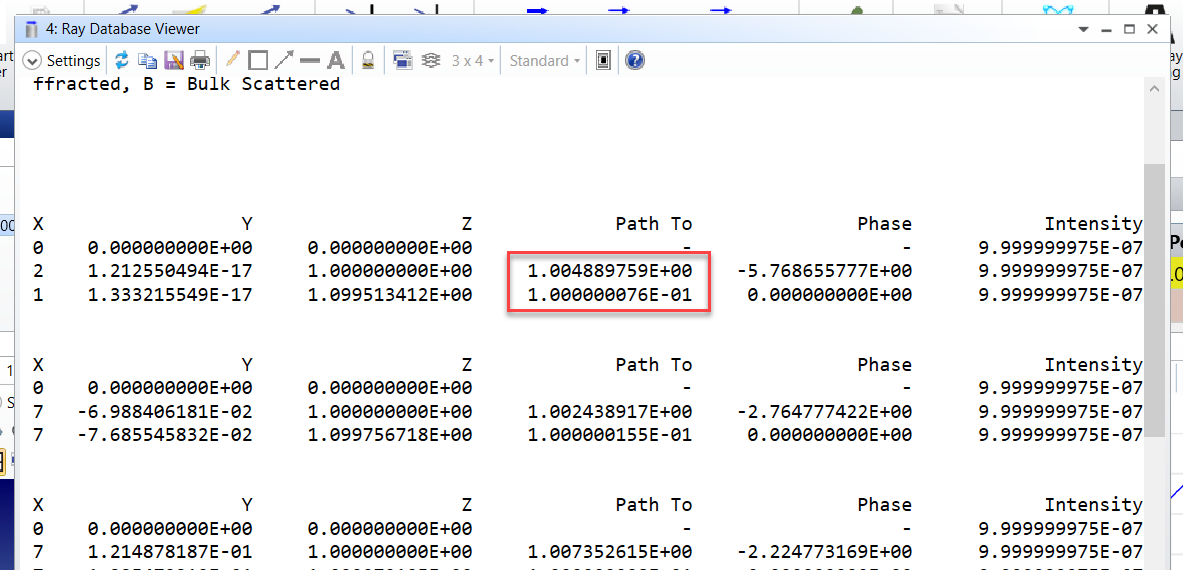Hi all,
When I see a coherent phase in the detector rectangle, the detector viewer shows discontinuous wrapped phase data.
I think it is not intuitive to check the phase whether it is right or not because it looks like noise.
(But we can check continuous wavefront in SQ mode!)
Because the phase is discontinuous, it is necessary for more numerous data relative to unwrapped(continuous) data to represent the complex phase.
In this situation, how do you use this 'coherent phase' function in the detector viewer?
Are there good examples to understand it?
Can I see the spherical wave or plane wave data with a 'coherent phase' at the detector rectangle in the simple lens system?
Thanks in advance.






